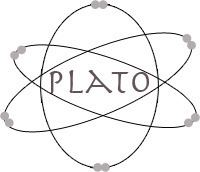Initial release α | Website α.org | |
 | ||
PLATO (Package for Linear-combination of ATomic Orbitals) is a suite of programs for electronic structure calculations originally designed and written by Andrew Horsfield and Steven Kenny, but now with contributions from others. It receives its name from the choice of basis set (numeric atomic orbitals) used to expand the electronic wavefunctions.
Contents
PLATO is a code, written in C, for the efficient modelling of materials. It is primarily a tight binding code (both orthogonal and non-orthogonal, allowing for monopole charges and electron spin), but also performs calculations using density functional theory (both in the local-density approximation and the generalized gradient approximation). The program can be applied to systems with periodic boundary conditions in three dimension (crystals) and those with none (molecules).
Generating Basis Sets
The first step before performing a simulation is to build the set of functions (basis sets) out of which we will construct the electronic wave functions. Many possibilities exist. PLATO uses the wavefunctions from atoms. Once we have these functions, we must perform integrals of the Hamiltonian that describes the electrons.
How PLATO does a calculation
How PLATO does its calculations is summarised in several papers.
Applications of PLATO
The choice of basis set makes Plato particularly suitable for certain problems, notably condensed matter systems with lots of empty space (such as surfaces) and metals. Some examples of its use so far are listed below.
